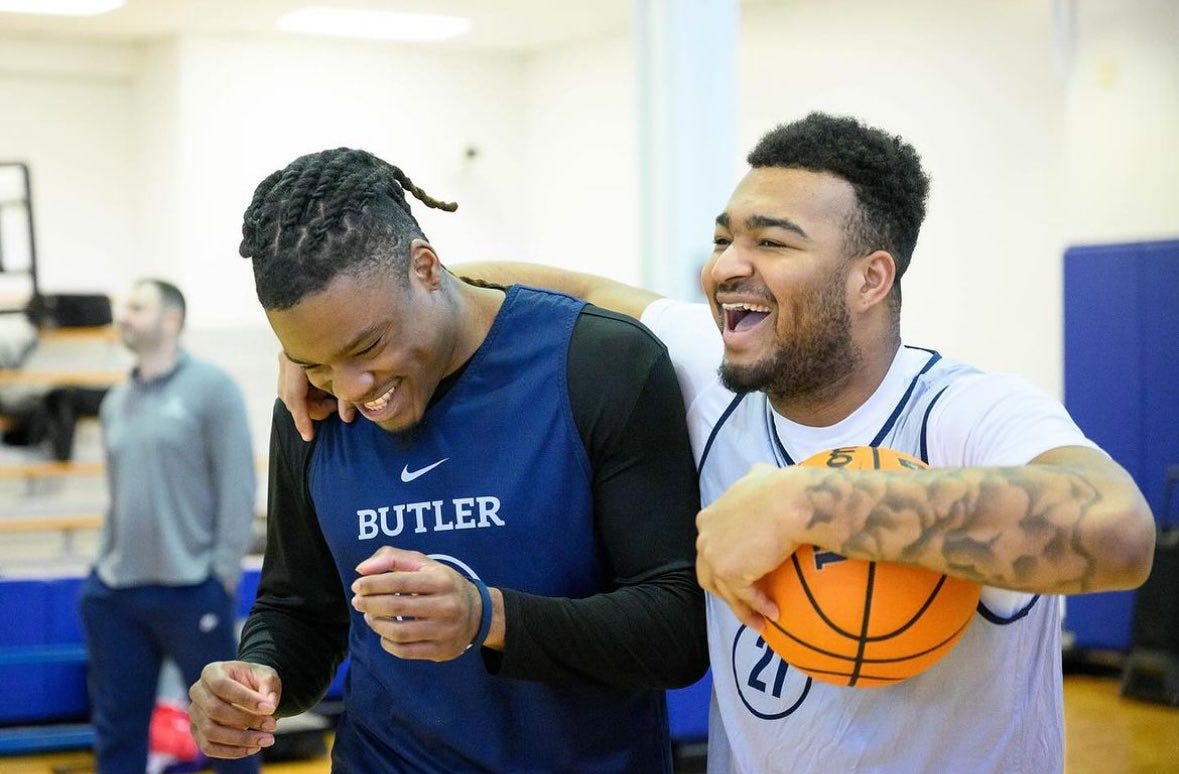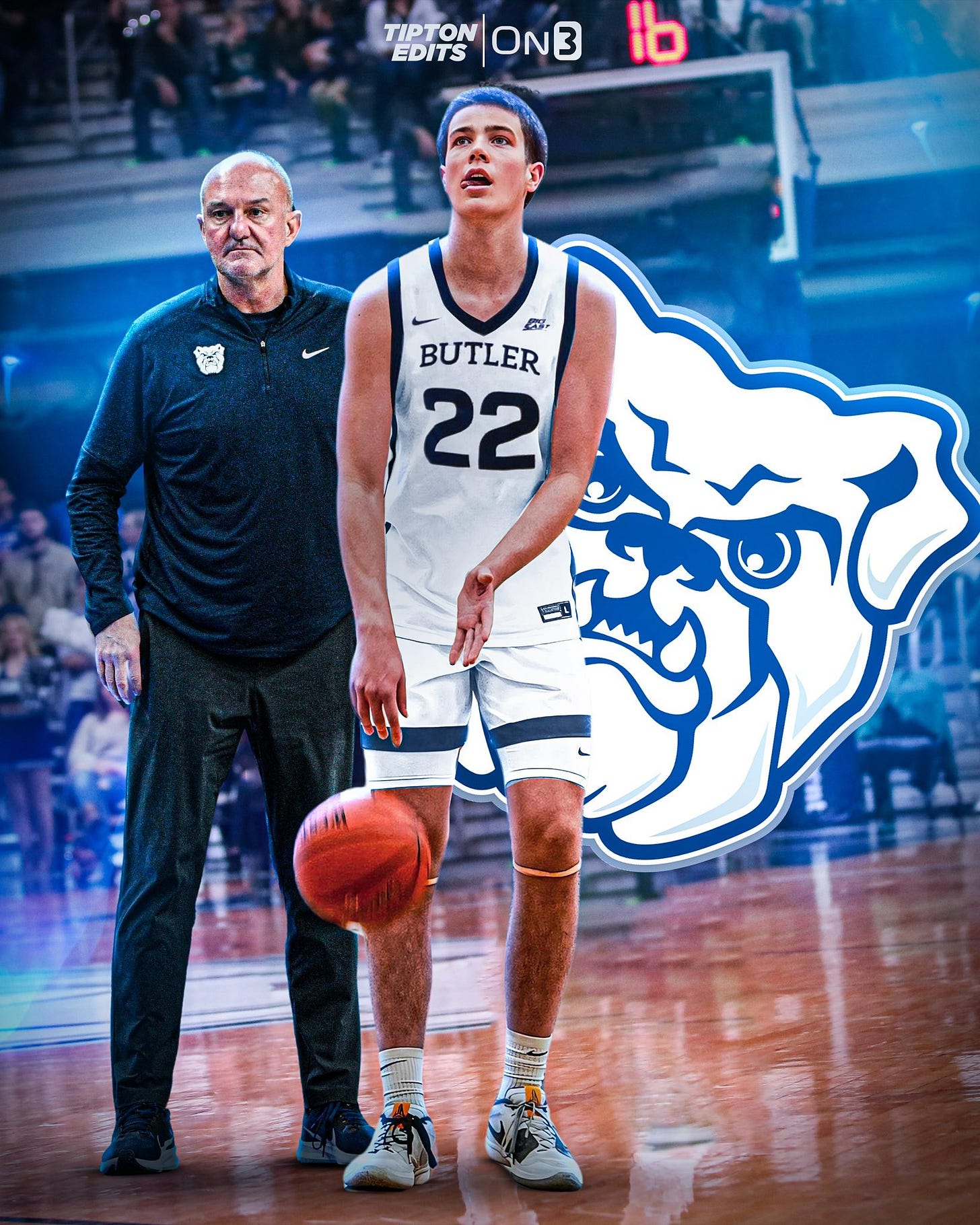Big East Roster Analysis: Butler Bulldogs
Introducing the series that will break down each roster of Providence's competitors
This is not a team-by-team preview series for the Providence Friars’ 10 Big East rivals, though it’s not far off. What it is intended to be is a look at how each of the 10 rosters is put together for the coming season. The fact that 60% of my projected nine-man rotations didn’t play at all last season for their current team doesn’t even seem that high, but it means that I (and you) have a lot of learning to do.
Much of this exercise is to help me understand these rosters and the five dozen or so new players that the Friars will face at least two times this winter. I don’t pretend to know the roster as well as some fans of each team do, but I’ve spent a lot of time researching to get a sense of who these players are, where they fit on each roster and whether and how they’ll be able to contribute to winning this season. I hope this serves as a worthy primer in the dog days of summer with the season tip-off still three months away.
If it feels like I’m working through how I feel about the rosters as I write, that’s because that is often the case. There are a lot of new faces and I spent a lot of time trying to figure out what each piece brings and how it fits together. I’m sure I’ll be wrong often, but I think I walk away more informed, and I’m hoping you will too.
Butler Bulldogs (see below)
Butler Bulldogs
I admit to being wrong in both directions on Butler so far in Thad Matta’s tenure. When Matta took over as coach before the 2022-23 season, I was optimistic about Butler’s chances, believing a could with his pedigree would turn his first roster into a top-75 squad. Instead, injuries and ill-fitting pieces led to Matta coaching his poorest team ever (Butler went 14-18 and finished ninth in the Big East). Last year, Matta retooled the roster, but he didn’t appear to have made a significant upgrade in talent. And yet, Pierre Brooks and Jahmyl Telfort became proved to be breakout transfers, and the Posh Alexander and D.J. Davis backcourt worked as well as anyone could have expected. The Bulldogs were in contention for an NCAA Tournament bid before a five-game February losing streak derailed those hopes. But Butler fans can walk away from last winter with a proof of concept and belief that Matta is still Matta, which means Butler will have one of the best coaches in the league.
I don’t know if it was expected that Alexander (Dayton) and Davis (Washington) wouldn’t be returning to Butler for their COVID year, but that’s the reality, so instead of bringing back four starters, Butler will settle for returning its two best players — Brooks and Telfort — along with plenty of length around them despite new questions in the backcourt.
Let’s start with those questions — the four players likely to fill the 80 guard minutes are Landon Moore, Kolby King, Finley Bizjack and Jamie Kaiser. Bart Torvik’s roster projections imply that Kaiser will get plenty of playing time at a guard position, and his shooting volume on 3’s and free-throw percentages imply that he can be a floor-stretcher there, but he’s not shown that he’s a guard when it comes to ball-handling and passing, which puts a lot of burden on King. King played plenty of point guard at Tulane last year, his lone season in New Orleans after starting his college career at St. John’s (backing up Alexander). The problem is that King is not a natural facilitator – he’s a solid defender and can score at multiple levels, but he’s not the ideal candidate to get the ball in the hands of Telfort and Brooks in positions to succeed. Moore, the transfer from St. Francis (Penn.) entering his second season at Butler, is more of a caretaker backup, which means that the most effective backcourt likely includes King growing into a lead ball-handler roll while Bizjack takes a step forward after showing flashes as a finisher and a willing shooter as a freshman last season. Perhaps he can capitalize on his 3-on-3 success with teammate Boden Kapke.
I’ll admit to burying the lede here – when you have Telfort and Brooks, you have a superb platform to build on (and by platform, I mean a platform shaped like two barrels). With the backcourt likely low on playmaking, Telfort’s creativity at forward will be key to Butler approaching its offensive ceiling. The former Northeastern Huskie is difficult to defend in the post due to his combination of size, below-the-basket creativity, passing and excellent foul shooting (85%). Brooks is the superior perimeter shooter (41% on 194 attempts last season) and better at both getting two and finishing at the rim — it was a remarkable breakout after two seasons mostly riding the pine in East Lansing. Without proven commodities like Davis, Alexander and center Jalen Thomas surrounding them, they’ll both need to carry larger burdens while maintaining their efficiency.
At center, Andre Screen is penciled in as the starter. In his first season after transferring from Bucknell, the 7-foot-1 senior was excellent in a backup role, providing elite rebounding on both glasses to go with solid rim protection and play-finishing. But even at Bucknell, Screen was not a big minutes guy, and so that means Kapke will have a chance to provide a different wrinkle. In limited flashes last season, the rising sophomore showed the ability to rebound on the defensive glass and a willingness to step out and attempt threes, the latter being a trait that could be valuable in providing more room for Telfort and Brooks to operate in the paint.
The final piece of the rotation is Iowa transfer Patrick McCaffery, who goes from Iowa City to Indianapolis just like older brother Connor (boyfriend of WNBA phenom Caitlin Clark) and, eventually, younger brother Jack, who committed to Butler in late July.
Depending on how Matta elects to play it, Patrick could get starter minutes backing up both forward spots and perhaps in super-small centerless lineups or super-big lineups with only one true guard. McCaffery does a bit of everything, but he is particularly good at finishing around the rim — better than 60% — and had more dunks last season (9) in less playing time than Brooks and Telfort combined (5). Butler could use that sort of rim pressure.
Due to the backcourt questions, this Butler team doesn’t seem to fit together as well as last season’s, but there is perhaps more overall depth and talent, and having continuity with Telfort and Brooks should put the Bulldogs in a good position to compete in the second tier of the Big East, though at a level a bit shy of NCAA Tournament at-large quality.






